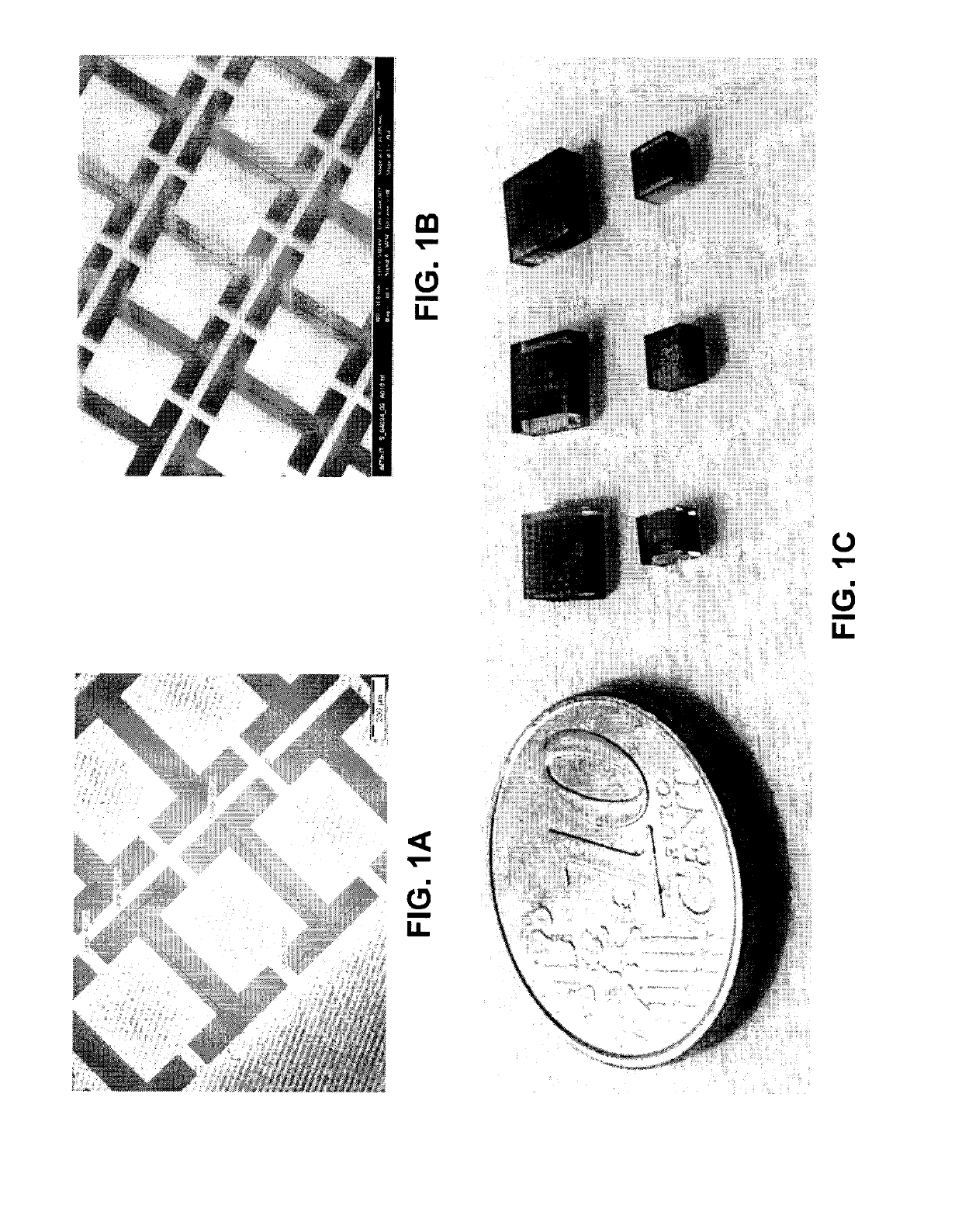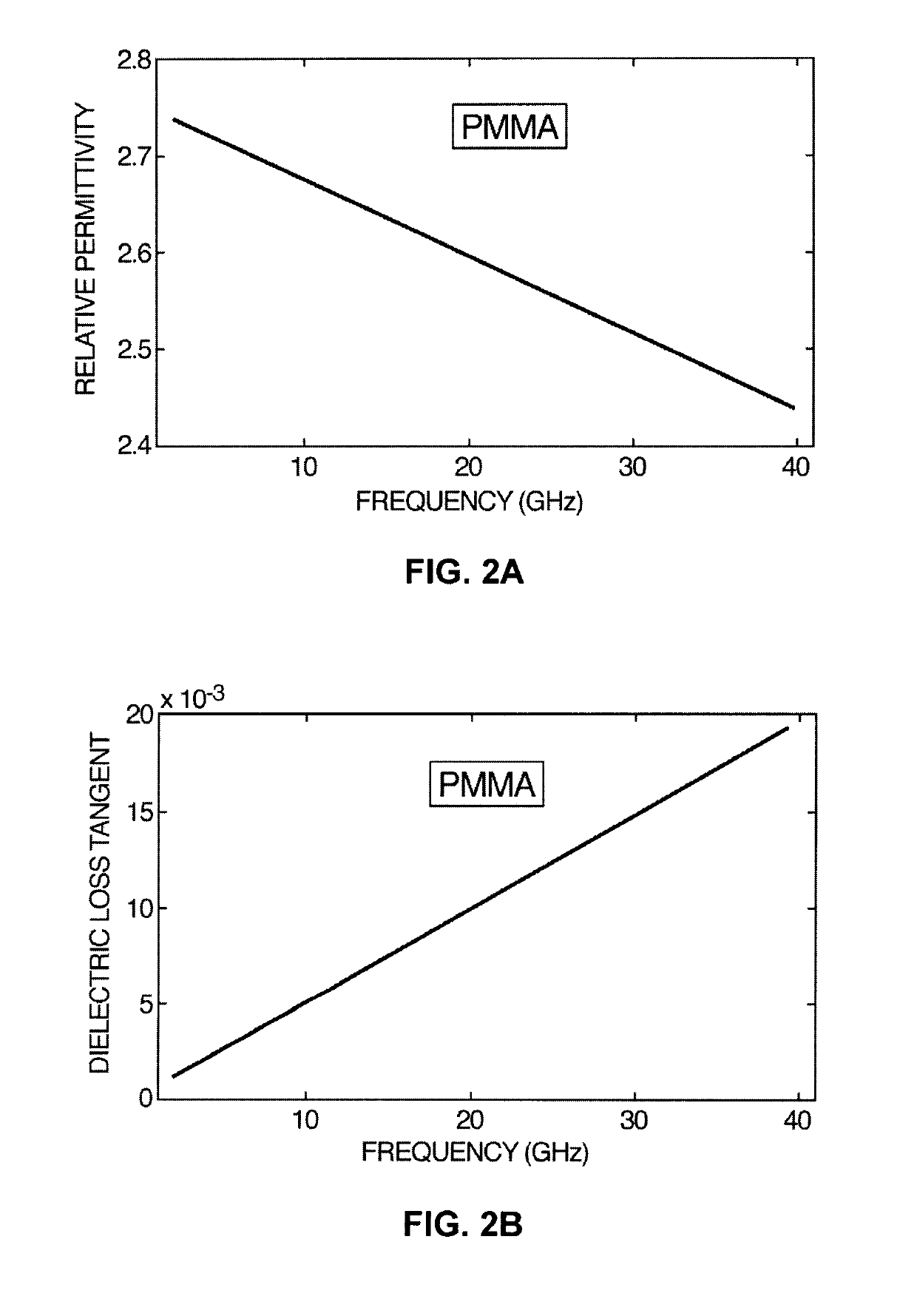Meta-material resonator antennas
a dielectric material and metal-based technology, applied in the direction of antennas, electrically short antennas, electrical apparatus, etc., can solve the problems of limited dras to simple structures, difficult fabrication of known dras, and limited dras
- Summary
- Abstract
- Description
- Claims
- Application Information
AI Technical Summary
Benefits of technology
Problems solved by technology
Method used
Image
Examples
Embodiment Construction
[0086]The use of polymer-based materials can dramatically simplify fabrication of dielectric resonator antenna elements and arrays, and may facilitate greater use of this class of antennas in commercial applications.
[0087]Described herein are compact radio frequency (RF) antennas and devices using non-traditional polymer-based materials, and methods for fabricating the same. The described compact RF antennas enable improved performance and increased functionality for various emerging wireless communication and sensor devices (e.g., miniature radios / transmitters, personal / wearable / embedded wireless devices, etc.), automotive radar systems, small satellites, RFID, sensors and sensor array networks, and bio-compatible wireless devices and biosensors). In particular, these polymer-based antenna devices may be referred to as polymer or polymer-based resonator antennas (PRAs).
[0088]Currently, one of the biggest obstacles to the continued miniaturization of RF wireless devices is antenna s...
PUM
 Login to View More
Login to View More Abstract
Description
Claims
Application Information
 Login to View More
Login to View More - R&D
- Intellectual Property
- Life Sciences
- Materials
- Tech Scout
- Unparalleled Data Quality
- Higher Quality Content
- 60% Fewer Hallucinations
Browse by: Latest US Patents, China's latest patents, Technical Efficacy Thesaurus, Application Domain, Technology Topic, Popular Technical Reports.
© 2025 PatSnap. All rights reserved.Legal|Privacy policy|Modern Slavery Act Transparency Statement|Sitemap|About US| Contact US: help@patsnap.com



